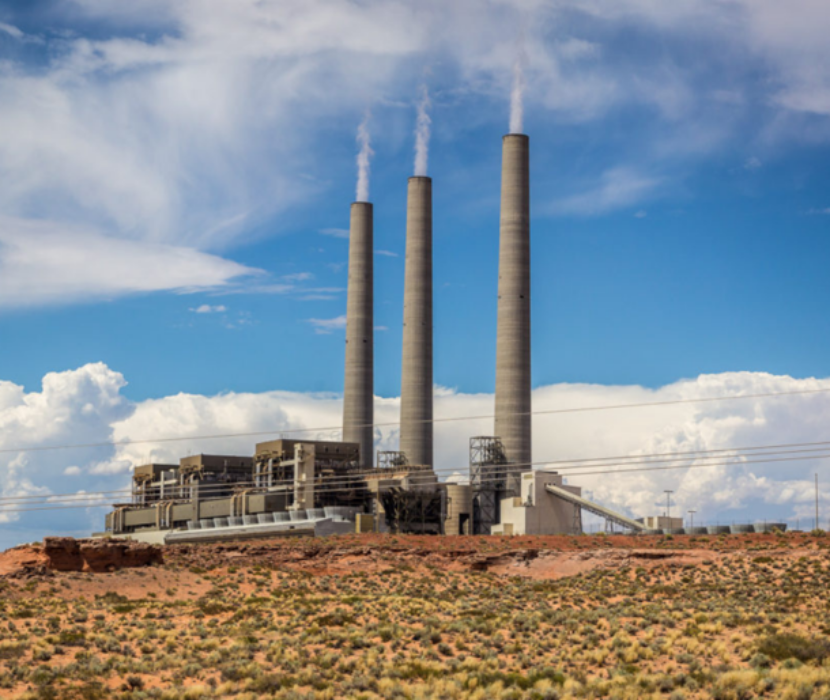
In late December 2022, Winter Storm Elliot swept across the United States, leading to delays and cancellations of thousands of flights and leaving 1.6 million Americans without power on Christmas Eve. In Buffalo, New York, Governor Kathy Hochul said the storm would go down in history as the most devastating. And as the temperatures plummeted, demand for heating went up.
While the storm affected the majority of the United States, the way it affected heating in the U.S. Northeast was distinct. The seven states in this region—New York, Connecticut, Rhode Island, Massachusetts, Vermont, New Hampshire, and Maine—have some of the oldest buildings in the nation, and a much greater portion of these buildings rely on fuel oil (petroleum) for heating than in other regions. Their reliance on natural gas heating (instead of electricity) is also greater than the rest of the United States.
This dependence on fossil fuels for heating brings the Northeast’s share of emissions from its commercial and residential buildings sectors to roughly two to three times more than the national average, according to data from the Environmental Protection Agency. (While natural gas is also used to generate electricity, zero-carbon generation sources including nuclear power and renewables also fall into that mix, lowering the overall emissions.) We can’t decarbonize the U.S. Northeast without decarbonizing heat.
Just a few weeks before Winter Storm Elliott, the Energy Futures Initiative hosted a workshop in Cambridge, Massachusetts, to convene a small group of stakeholders and discuss regional decarbonization solutions for heat. We published the insights from this workshop in a new summary report, “Decarbonizing Heat in the U.S. Northeast: Workshop Insights and Key Takeaways.”
Stakeholders discussed two main solutions for decarbonizing heat in the U.S. Northeast: substituting fuel oil and natural gas-based heating with electric heating or low-carbon fuels such as hydrogen or renewable natural gas. Taking steps to make the switch requires us to confront challenges that stem from the Northeast’s various natural, historical, and demographic features:
High population density: Rhode Island, Massachusetts, Connecticut, and New York are among the top 10 most densely populated states in the country. New energy infrastructure—such as new pipelines for clean hydrogen or new transmission lines for electricity generation—would face the difficult task of navigating around existing clusters of energy infrastructure that surround the region’s large urban centers. In addition to its urban areas, the Northeast is also home to many protected lands where new energy infrastructure cannot be built.
Aging infrastructure: One-third of the Northeast’s buildings were built before 1940 and nearly half before 1960. Older buildings tend to be less energy efficient because of a lack of insulation and gaps and cracks in such places as windows, doors, floors, walls, or ceilings. As a result, these older buildings require more energy to stay warm that ultimately produces more emissions. Companies and homeowners also face major cost barriers to fully electrify these older buildings because these retrofits usually require entire structural rebuilds and replacements. Thus, hydrogen and renewable natural gas would generally be cheaper ways to replace fuel oil and natural gas and reduce emissions in the near term for the region’s older buildings.
Local resistance: Energy infrastructure builds have typically faced opposition from local communities in the Northeast, and clean fuels could face similar challenges, especially with the need for new pipelines, production facilities, and additional electricity supply. For example, repeated resistance to natural gas pipelines in New York has left the region more dependent on fuel oil, and an attempt to build a rate-payer-funded $1 billion high-voltage transmission line to connect to hydropower in Quebec was stalled for two years after a statewide referendum in Maine in November 2021 before a recent court ruling allowed construction to proceed in April of this year.
These challenges for decarbonizing heating in the U.S. Northeast demonstrate why the region must utilize a flexible array of energy options to reach its climate goals. We need to be realistic about how we can use the infrastructure and resources we have today to work toward long-term decarbonization goals.
– Georgia Lyon, Communications Associate
With contributions from Alicia Moulton (Deputy Director of Communications) and Nick Britton (Research Associate)
Supplemental Material
Related Content
(Share this post with others.)








